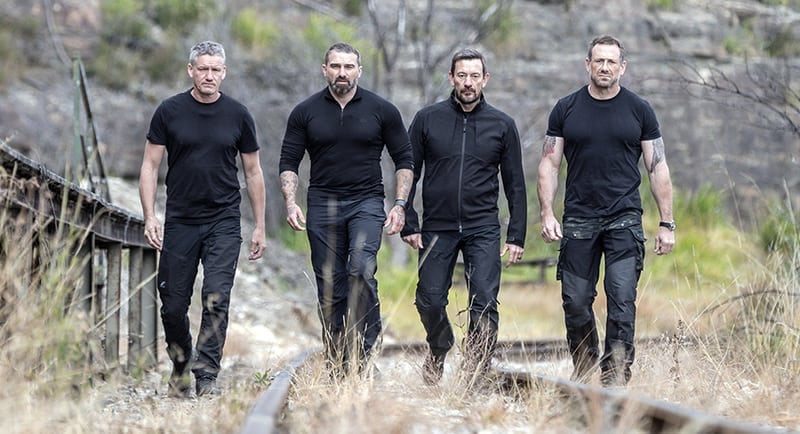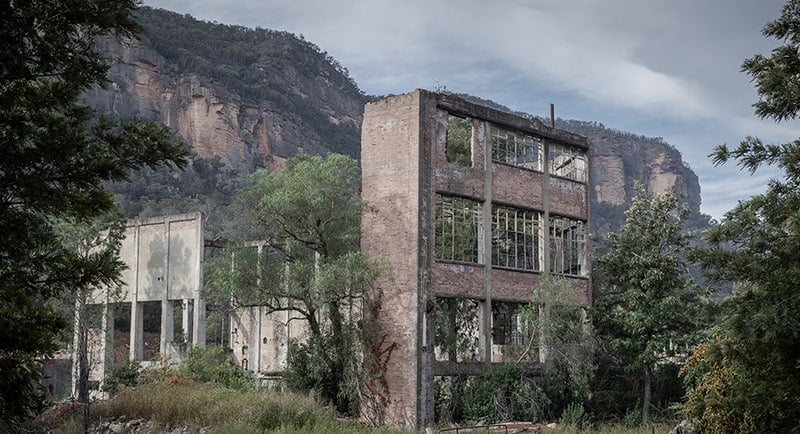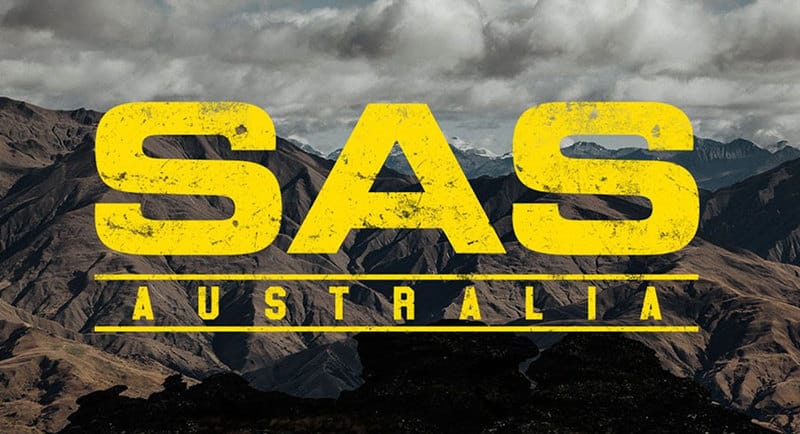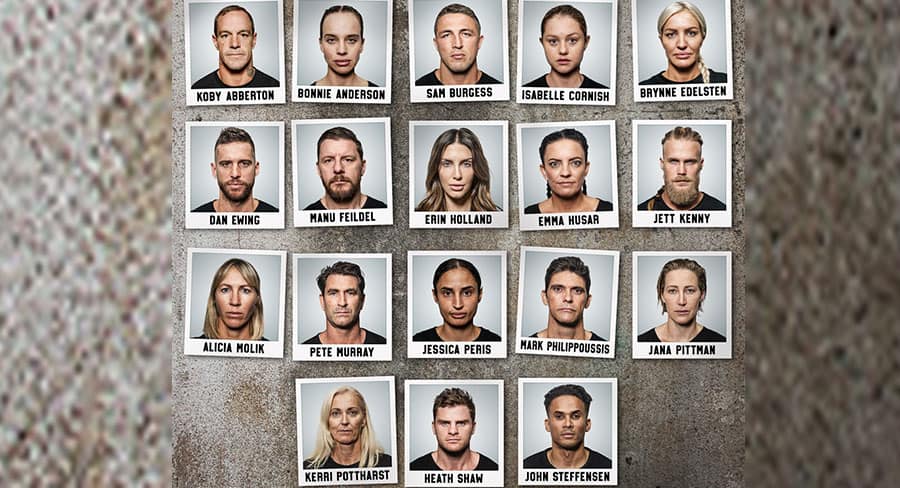The new season of SAS Australia storms onto screens Monday, 13 September at 7.30pm on Channel Seven and 7plus.
Under the direction of elite ex-Special Forces soldiers Ant Middleton, Mark “Billy” Billingham, Jason “Foxy” Fox and Ollie Ollerton, recruits will face a series of physical and psychological tests from the real SAS selection process – on the most gruelling course ever seen in the UK or Australia.
See More: SAS Australia: Everything you need to know about the Directing Staff
Faced with extreme challenges in unforgiving terrain, these famous faces will eat, sleep, and be tested in punishing conditions, with no allowances or exceptions made for their celebrity status or gender.
As they’re subjected to extreme physical endurance, sleep deprivation, interrogation and psychological testing, these men and women will need to push past their fears and their limits in the hope of passing SAS selection.
Some will reach breaking point and withdraw. Who has the mental strength to tough it out to the end?

The Recruits
The star recruits with something to prove on TV’s toughest test are:
Alicia Molik – Tennis Champion
Bonnie Anderson – Singer / Actor
Brynne Edelsten – Socialite
Dan Ewing – Actor
Emma Husar – Former Politician
Erin Holland – TV Presenter
Heath Shaw – AFL Star
Isabelle Cornish – Actor
Jana Pittman – Dual Olympian
Jessica Peris – Sprinter
Jett Kenny – Ironman
John Steffensen – Olympic Medallist
Kerri Pottharst – Beach Volleyball Olympian
Koby Abberton – Bra Boy
Manu Feildel – Celebrity Chef
Mark Philippoussis – Tennis Legend
Pete Murray – Musician
Sam Burgess – NRL Star
See More: SAS Australia: Everything you need to know about the cast
2021 SAS Australia Location
This year the recruits will be operating in Capertee Valley, NSW.
“This year’s location is more isolated. It’s so vast, so open, so mountainous, that recruits think to themselves ‘there’s nowhere to run, nowhere to hide’. And that can be a very intimidating place to be,” said Ant Middleton, chief instructor.
Once they arrive:
• Recruits are not referred to by name – only the number on their armband.
• Each recruit gets issued with a 20kg Bergen which contains items they need for survival including two sets of kit, a helmet, chest harness, sleeping mat, tarp, towel, water bottle, knife, mess kit, mug, toilet roll, sanitising wipes, sunglasses, head torch, notebook, pencil, toothpaste, toothbrush, belt, armband, whistle, watch, sleeping bag and compass.
• Recruits sleep on camp cots, with one sleeping bag and an army blanket. They average four and a half hours rest per night.
• Recruits do not have access to hot water. They have to fill a bucket with cold water from a tap and carry it to the sink area – with one sink allocated to dishwashing, and another to wash themselves in.
• There are no flushing toilets. A ‘short drop’ toilet (drum and sawdust) has to be cleaned out and maintained by the recruits themselves, along with all other aspects of base maintenance.
• Recruits have to chop their own wood and light the fires that are the only sources of heat – two pot belly stoves in the Recruit Dorm. Fire is also the only means of drying their clothing, a critical nightly ritual after days spent in water, mud, and ice.
• Recruits receive three basic meals a day in the Mess. All recruits have to eat at the same time and only the duty recruit is allowed to serve them. An average day consists of oatmeal and eggs for breakfast, a sandwich for lunch and a protein with salad or vegetables for dinner.
• Temperatures range between 1-23°C during filming.
• Recruits are only allowed to see the doctor when the DS approve a visitation.
• Recruits travel in the back of cramped wagons for up to six hours a day. There are no toilets on the road to each task – recruits have to ‘go bush’.
• Recruit injuries include a dislocated elbow and torn ligaments. The doctor uses more than 340 Band-Aids, 80 metres of strapping tape and 1,000 alcohol swabs in two weeks.
• 345 mouse traps are used at Base during the 14-day shoot, which takes place during the 2021 mouse plague.
• More than 200 crew work on the series. Recruits are not allowed to communicate with crew members – they can only speak to the DS.
• 57 cameras and six drones are used to film the series. One drone is still at the bottom of the lake.

SAS Australia Terminology To Know
Base
The recruit and DS living quarters, which include the Recruit Dorm, DS Dorm, Mirror Room, Prayers Room, Mess and Parade Square.
Beastings
The imposition of arduous physical exercises for training or punishment, aimed at breaking or making the recruits.
Bergen
A type of rucksack supported by a frame, used by the military (known as the ‘house on your back’).
Detail
When the DS brief the recruits on their task or what they’re about to do, this is known as detail.
DS
The DS or Directing Staff are the ex-Special Forces team who direct the course (also referred to as “Staff”).
Duty Recruit
The DS nominate a new Duty Recruit every few days who is responsible for being the spokesperson for all recruits to the DS.
Mirror Room
This is where the DS interrogate the recruits with tactical questioning (sometimes referred to as TQs or Interrogations).
Oppo
A military term for buddy or mate.
Parade Square
The outdoor area on base where the DS brief and exercise the recruits.
Prayers Room
The room where the DS discuss and assess the recruits and the day’s events.
Psychometric Testing
Used to assess an individual’s performance potential for the Special Forces.
Tasks
The off-base challenges such as Chopper Ladder Crossing, Worm Hole, Submerged Vehicle Escape, Forward Abseil, Hostage Rescue, Fall & Break and Tactical Driving.
VW
Recruits can voluntarily withdraw (VW) from the course at any time by handing their numbered armband over to one of the DS.

